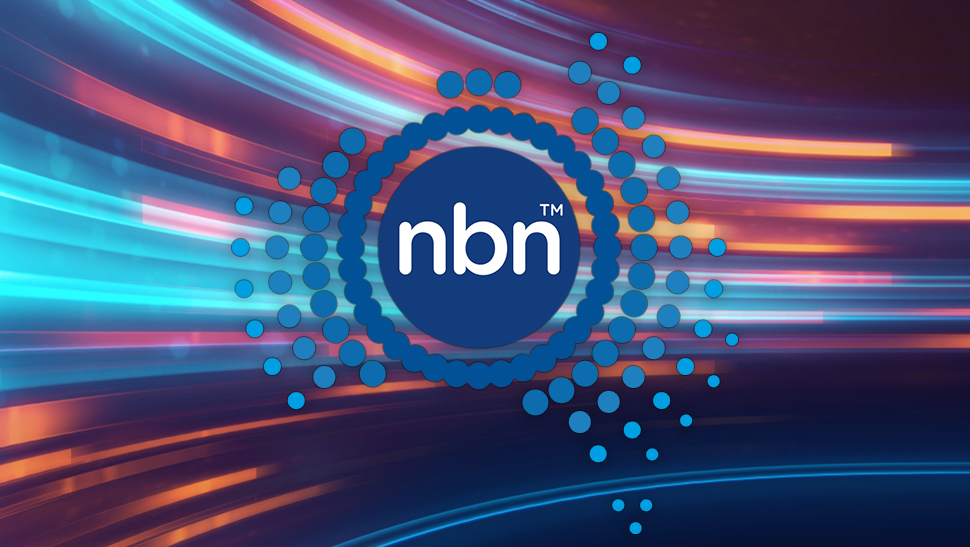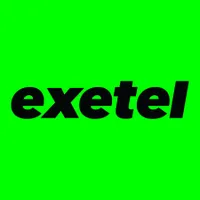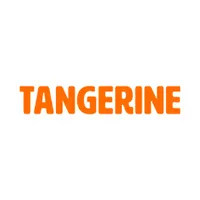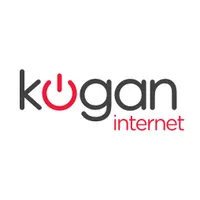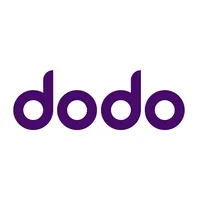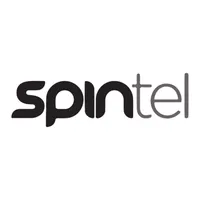Best NBN plans: my expert picks for affordable, fast and reliable internet
I've compared the best plans from NBN providers including Spintel, Tangerine, Exetel and more
With so much competition with regards to price, speed and overall value, selecting the outright best NBN plans in Australia is no easy task. Fortunately, I'm still up for it, and can use my experience monitoring the NBN landscape for the past 3 years to determine which NBN plans are most worth your money.
If anything, choosing the best plans has become a little easier since the arrival of the NBN speed upgrades in September 2025. This is because the NBN 500 tier, in particular, offers unrivalled value in my opinion. You do need a specific connection type to sign up to this speed tier, but do so and there's nothing better. You can, of course, go faster still, up to 2Gbps, or if you internet needs are basic then an NBN 25 plan or NBN 50 plan will serve you fine.
If you'd like to change your home internet plan but you aren't sure what the best option is, I hope my recommendations below point you in the right direction. The majority of my choices are based on price, although, it's certainly true that the cheapest NBN plan isn't always the best NBN plan. In fact, it could pay to spend a little extra each month in return for a more reliable connection or better customer service.

I'm TechRadar's resident NBN expert, constantly seeking out the best plans and deals from Australia's biggest providers. I'm a stickler for keeping track of typical evening speed claims (because they can change all the time) along with introductory plan pricing (because they can also change on what feels likes a daily basis).
Best NBN plan overall
Since the arrival of the speed upgrades across the fixed-line NBN, I now can't recommend anything other than an NBN 500 plan. This is because it offers up to 500Mbps download speeds, for the same price as an NBN 100 plan that is 5x slower. The new 500Mbps tier is an effective replacement for NBN 100, although it's only available for specific connection types.
These connection types are fibre to the premises (FTTP) or hybrid fibre coax (HFC). If you connect via another technology – perhaps FTTN/C or FTTB – then you can't access the faster speeds. However, homes on FTTN/C technology are likely eligible for the free fibre upgrade that will see the necessary equipment installed at your premises.
Exetel One | 500Mbps | AU$80p/m
Exetel was the first to market with an NBN 500 plan, way ahead of the wider rollout, and it's still my favourite plan overall. It's incredibly well-priced, is the only one to cost under AU$1,000 from year 2 and it comes with some extra perks including speed boosts *chef's kiss*.
• AU$80 minimum cost
• AU$960 yearly cost
Also consider
Why you can trust TechRadar
Tangerine Speedy Max | NBN 500 | AU$68.90p/m (first 12 months, then AU$88.90p/m)
I also have to give a shout out to Tangerine, due to the fact it's currently offering a full 12-month discount on its NBN 500 plan, saving you a huge AU$240 off the total first year cost. As a result, it's the cheapest of all the providers I monitor.
• AU$68.90 minimum cost
• AU$826.80 first year cost
• AU$1,066.80 ongoing yearly cost
- View more of the best NBN 500 plans
NBN 25
An NBN 25 plan is ideal for light users or single person households. It should provide just enough speed to stream a 4K movie.
Flip Unlimited Premium | 25Mbps | AU$44p/m (first 8 months, then AU$59.90p/m)
If it's basic internet you seek, the only option you should consider in my opinion is Flip. The telco has been the cheapest provider of this speed tier for as long as I can remember, and it's cheaper still thanks to an extended 8-month discount.
• AU$44 minimum cost
• AU$591.60 first year cost
• AU$718.80 ongoing yearly cost
- View more of the best NBN 25 plans
NBN 50
An NBN 50 plan is a great option for a majority of users because it will not only comfortably handle a 4K video stream or two, but in general it has enough bandwidth to allow a family household to connect at the same time. If you download large game files, however, then you may want to look for a faster alternative.
Tangerine Value Plus NBN | 50Mbps | AU$64.90p/m (first 12 months, then AU$84.90p/m)
Tangerine also gets my vote here, also because of its incredible 12-month discount, making it the cheapest provider of this speed in the first year. For the most affordable and worthwhile service from year two, check out the Buddy plan below.
• AU$59.90 minimum cost
• AU$856.80 first year cost
• AU$994.80 ongoing yearly cost
Also consider
Buddy Value | 49Mbps | First month free (then AU$75p/m)
Buddy is still a great option for an NBN 50 plan, especially now you can score your first month for free when using the code FREEMONTH at checkout. Thanks to the discount, it's the second-cheapest over the first 12 months, behind Tangerine. Plus, Buddy is the most affordable provider from year two, so if you remain connected, you'll achieve excellent value.
• AU$0 minimum cost
• AU$825 first year
• AU$900 yearly cost
- View more of the best NBN 50 plans
NBN 100
While it may be true that NBN 100 plans have been virtually replaced by 500Mbps alternatives, there are still homes that can't access the faster speeds. These are mainly going to be homes that connect via fibre to the building (FTTB) or homes that are currently not eligible for the free fibre upgrade. In these instances, an NBN 100 plan is the fastest available, and Spintel is my top pick.
Tangerine Speedy NBN | 100Mbps | AU$68.90p/m (first 12 months, then AU$88.90p/m)
For the same reasons, and indeed, same price as its NBN 500 plan, Tangerine's NBN 100 plan is my top pick for now. If 100Mbps is the fastest NBN you can get at your premises, there's nothing better in my opinion.
• AU$68.90 minimum cost
• AU$826.80 first year cost
• AU$1,066.80 ongoing yearly cost
Also consider
Kogan Internet Gold Unlimited | 100Mbps | AU$65.90p/m (first 6 months, then AU$85.90p/m)
Kogan Internet has been a top recommendation of mine for some time, but while it's had to yield to Tangerine on price, it's still a good option in my mind with some useful perks.
• AU$65.90 minimum cost
• AU$910.80 first year cost
• AU$1,030.80 ongoing yearly cost
- View more of the best NBN 100 plans
NBN 250
NBN 250 plans have essentially ceased to exist in Australia, as they've been replaced by NBN 750 plans (my favourite of which you can view a little further down). However, if you are hell bent on getting a 250Mbps NBN plan, Superloop still has an option for you, complete with faster upload speeds than what you'll get from a 750Mbps alternative.
Superloop Creator | 250 / 100 | AU$85p/m (first 6 months, then AU$99p/m)
Superloop's Creator plan nets you 250Mbps download speeds alongside superfast 100Mbps upload speeds, ideal if you're a content creator (hence the name of the plan). The faster upload speeds are useful if you upload large files to cloud storage, or carry out a lot of video calls from home. I also like how affordable this plan is considering what you get in return.
• AU$85 minimum cost
• AU$1,104 first year cost
• AU$1,188 ongoing yearly cost
- View more of the best NBN 250 plans
NBN 750
NBN 750 plans, I feel, sit in a bit of limbo in the NBN landscape. They're a bit faster than NBN 500 and a bit slower than NBN 1000, and cost somewhere in between on average too. For my money, I'd either opt for a great value 500Mbps plan, and if you know want to go faster, then go gigabit.
If you have your heart set on an NBN 750 plan though, Flip gets my seal of approval.
Dodo Home Superfast | 700Mbps | AU$79.99p/m (first 12 months, then AU$99.90p/m)
Dodo is my top choice for an NBN 750 plan, as it promises 700Mbps speeds during the busy evening hours and has recently introduced a 12-month discount, saving you AU$240. As a result, it's the only provider of those I monitor to come in under AU$1,000 in the first year.
• AU$79.99 minimum cost
• AU$959.88 first year cost
• AU$1,199.88 ongoing yearly cost
- View more of the best NBN 750 plans
NBN 1000
Gigabit internet is now the second-fastest tier available in Australia, although I've yet still to see a provider claim the absolute maximum 1,000Mbps download speeds. I've therefore picked my favourite option that come close to that magic figure.
Buddy Telco Zoomy | 875Mbps | First month free (then AU$99p/m)
Buddy Telco continues to be my top recommendation for an NBN 1000 plan due to its well-reviewed service and low cost. That's especially true now that you can get your first month for free with the code FREEMONTH. What was already an affordable plan becomes the outright cheapest in the first year. Plus, the telco advertises some of the fastest typical evening speeds of any provider, which is the whole point of signing up for an NBN 1000 plan, right?
• AU$0 minimum cost
• AU$1,089 first year cost
• AU$1,188 ongoing yearly cost
Also consider
Spintel Home Ultrafast | 900Mbps | AU$89p/m (first 6 months, then AU$99.95p/m)
Spintel's NBN 1000 plan is another standout option, claiming 900Mbps typical evening speeds for the low cost of AU$89p/m for the first 6 months.
• AU$89 minimum cost
• AU$1,133.70 first year cost
• AU$1,199.40 ongoing yearly cost
- View more of the best NBN 1000 plans
How I choose the best NBN plans
To select my picks for the best NBN plans, I consider and weigh up the following key aspects for fixed-line NBN plans:
Speed: Each speed tier indicates the maximum speed available, for example, an NBN 50 plan is able to reach download speeds of 50Mbps. However, not every provider will be able to reach the maximum speed available during the busiest evening hours, which fall between 7 to 11pm. NBN providers are required to report their typical evening speeds, so I look for plans that have a maxed-out typical evening speed. No provider reaches the theoretical maximum of 1,000Mbps in the NBN 1000 tier, so in this instance, I consider the total claimed megabytes per second (mbps) against price to weigh relative value.
Price: Price is an important factor in my decision making. I look for plans that are below, or at least on par with, the average monthly price in their respective speed tier. Price ultimately has to be weighed up against speed, as there’s no use paying for a cheap NBN plan that offers slower-than-average speed. Most NBN providers also offer an initial discount period (typically 6 months) to encourage you to sign up, so I look for competitive offers when making my choices. The ongoing price must also remain reasonable to get my recommendation.
Data allowance: The majority of fixed-line NBN plans offer unlimited data, so in all but exceptional cases, I only recommend plans with an unlimited data allowance.
Performance: The ACCC monitors the performance of some of the top NBN providers in Australia, so I always take this data into account when making my recommendations. If the ACCC doesn’t monitor a particular internet provider, I also look at feedback provided by real users on sites such as Whirlpool.
NBN FAQ
What is the NBN?
The National Broadband Network (NBN) is Australia’s upgraded internet and phone infrastructure. It’s a government initiative that was first announced more than 10 years ago, and after several changes to the rollout plan, it’s officially been declared complete (though upgrades are still ongoing).
The NBN uses optical fibre and other technology types to get faster, stable internet into homes across Australia, taking the place of copper wires and cable broadband.
Understanding NBN speeds: which is right for you?
Choosing an NBN speed tier is arguably the most important decision you’ll make when it comes to getting internet. To figure out which is right for you, factor in how many people will be using the internet in your household and what their usage is like. Here, we’ve broken down each speed tier, and what they get you.
Your connection type can also limit what speed tiers you can access – click here to learn more about NBN connection types, or head to the NBN Co’s website to check what connection is available at your address.
NBN 25 (Basic II): 25Mbps download | 5Mbps upload | Any connection type | 1-2 users | For one or two people who want to browse the web at the same time, stream music and stream video in 1080p.
NBN 50 (Standard): 50Mbps download | 20Mbps upload | Any connection type | 2-4 users | Allows multiple users to stream in high definition and play games online, and crucially for some, it’s higher uploads are well-suited to working from home – particularly if you need to video chat.
NBN 100 (Fast): 100Mbps download | 20Mbps upload | Any connection type | 5+ users | Suitable for streaming video in 4K, downloading large files and having multiple devices online at the same time.
NBN 500 (Fast II): 500Mbps downad | 50Mbps upload | FTTP, HFC | 5+ users | Offering 5x the speeds of 100Mbps plan, this new speed tier is perhaps the best in terms of value and service. It's the one I'd pick over anything else if you can get it.
NBN 250 (Superfast): 250Mbps download | 25Mbps upload | FTTP, HFC connections | 5+ users | Plenty of speed to let multiple people stream in 4K at the same time, and allow faster downloads of large files such as games and OS updates. Only 2 providers remain.
NBN 750 (Superfast): 750Mbps download | 50Mbps upload | FTTP, HFC | 5+ users | The replacement tier for NBN 250, these new 750Mbps plans are ideal for speed-hungry homes. Although, I think they're tricky to recommend wholeheartedly. I'd instead opt for either a 500Mbps or 1,000Mbps plan instead.
NBN 1000 (Ultrafast): 1000Mbps download | 100Mbps upload | FTTP, HFC connections | 5+ users | Second-fastest speed tier you can get, and typical evening speed claims continue to improve, now hovering around 800Mbps.
NBN 2000 (Hyperafst): 2000Mbps download | 100Mbps upload (HFC), 200Mbps upload (FTTP) | 10+ users | The fastest speed tier now available, and perhaps overkill for a lot of people. Only a handful of providers are currently offering it.
What does 'typical evening speed' mean?
A typical evening speed is the realistic download speed you can expect on a plan during the peak busy hours of 7pm-11pm. Each telco will quote a typical evening speed on its plans, and this number can vary within the same speed tier, so be sure to check and compare.
The good news is that, while this figure serves as a rough guide, official data recorded by the ACCC has found the majority of providers actually overdeliver on the speeds they advertise.
With so many providers offering a fast service, factoring in typical evening speeds isn’t as important as it used to be, but you should still keep an eye out for low numbers. Any NBN provider quoting close to the tier’s top-rated speed is fine, but consider it a big red flag if it’s significantly lower than the norm.
What are NBN connection types?
First, to figure out what connection type you have, check your address on the NBN Co website. Your connection type is good to know, as not every NBN plan is supported by every connection, so it’s an easy first step in narrowing down your choices.
While the NBN is made up of a multi-technology mix, it’s important to know that you don’t have a choice in what technology is available to you. Different connection types have been built in different areas, so it’s entirely dependent on where you live. Below, we lay out the connection types across the network, and what they mean.
Fibre-to-the-premises (FTTP): FTTP is a fibre-optic line that runs directly to your home, and therefore is the best type of connection you can have. It requires a device to be installed in your home, and is what was originally intended for every household in Australia when the NBN was first announced. Customers with FTTN/C connections are now eligible to receive a free upgrade to FTTP.
Fibre-to-the-building (FTTB): An FTTB connection is most commonly used for connecting apartment blocks and similar buildings to the NBN. In this instance, a fibre-optic line runs to the building’s communications room, and existing technology such as copper wiring is used to connect each apartment from there.
Hybrid fibre coaxial (HFC): An HFC connection uses existing pay TV (Foxtel) or cable network as the final connection to households. The HFC line will run from your home to the nearest available fibre node.
Fibre-to-the-curb (FTTC): FTTC is when the fibre-optic cable extends a little closer to your home by connecting to a distribution unit located outside on the street. From there, it uses the copper phone line to run the last leg into your home.
Fibre-to-the-node (FTTN): Once the most common connection in Australia (and it still is, but only now by a few hundred thousand), FTTN uses existing copper phone wire to make the final connection to the home from a central node in your neighbourhood. The distance of your home to the node will affect the average speeds you can reach, so if your home is more than 700m from the node, it’s not advisable to choose an NBN 100 plan.
Fixed Wireless: Fixed Wireless connections are used to reach regional and remote areas. Homes in these areas will access the NBN from a transmission tower through an antenna installed on their roof.
Sky Muster satellite: The NBN’s Sky Muster satellite technology is also used to reach regional and remote communities. It requires a satellite dish to be installed on the premises, to which the NBN is received through satellite.
TL;DR: Check your address on the NBN Co website to find out what connection you have. It’s important to know because not every NBN plan is supported by every connection type.
How much should my NBN plan cost?
Once you know what type of connection you have and what speed you want, you can find a plan that suits you at the right price.
There’s good news for those who just want to surf the web casually – for that kind of use, it doesn’t matter what ISP you go with. Recent research by the ACCC has shown that your choice of provider won’t impact website browsing performance, so you can go with a cheap NBN plan if this is all you’re after.
But if you need to do more with your internet, you might want to consider some of the fastest NBN plans. These will cost you more per month, but they’ll allow you to download and upload large files faster, stream comfortably in 4K and game online with minimal lag.
When looking at NBN plan prices, be sure to suss out what internet deals are available too. It’s extremely common for ISPs to offer a discount for your first six months on their service, and it’s usually about AU$15 off each month.
The telcos will also try and tempt you up to faster plans with bigger discounts – up to AU$30 off each month for six months in some cases – so consider taking advantage of these options too.
There’s one last thing to mention when it comes to price, and that’s contracts. The vast majority of NBN plans come with no lock-in contracts, so you’re free to leave anytime (though some telcos will require you to pay out the remaining cost of your modem).
NBN plans on a contract will typically last between six and 12 months, and the benefit here is usually in reducing upfront fee costs (such as waiving the set up fee or throwing in a free modem).
While those benefits may seem tempting, weigh up those perks before committing to a contract. If you decide to leave early, you’ll likely still need to pay for each month you have remaining.
TL;DR: If you just want to browse the internet, a cheap NBN plan from a smaller NBN provider will do you just fine. For those that want to stream in 4K and game online, look for a fast NBN plan at a competitive price. Be sure to take advantage of six month discounts offered to new customers, and weigh up whether a contract or no-lock in term is best for you.
What’s the best NBN provider for Sydney, Melbourne, Brisbane and other cities?
Many people wonder whether there’s a 'best' NBN provider for their particular city. Over the last couple of years, we've seen rising interest in plans based on location, such as Sydney, Melbourne, Brisbane and Perth – so does your locale really matter when selecting an ISP?
The answer is tricky. If you live on the east coast of Australia, the answer is generally no, your location won’t matter when choosing a provider. If you live in South Australia, the Northern Territory or Western Australia, you may experience some benefit from choosing an ISP that’s headquartered (or at least has a local presence) in your state.
This is because of the way traffic flows to and from the user to the wider internet. All providers effectively act as a middle man in between users and the internet, routing all transmitted and received data through their own infrastructure. Providers’ direct physical connections to the internet are known as “points of interconnect” (POI), and all user internet traffic is routed through a POI. There are 121 POIs across Australia, but because connecting to a POI requires physical hardware, most service providers only use a smaller subset of these.
Because they’re the critical link in the user-to-internet chain, the physical location of your provider’s nearest PIO to you can play a large role in factors like latency and ping time. If your POI is thousands of kilometres away from your home, this is naturally going to result in a bigger delay in data flowing in both directions.
Latency and ping time matter most when it comes to tasks that work in real time – so things such as video calling and online gaming. An ACCC report released in April 2023 revealed that online gamers living in NSW and the ACT experience much lower latency on average compared to the rest of the country, and that’s because most game servers located in Australia are housed in Sydney.
While your internet provider of choice won’t be able to resolve all issues related to latency and ping time, signing up with a locally-based provider (or one that’s at least connected to a local POI) can help reduce these factors. For example, Pentanet is an ISP based in Western Australia that’s often spoken of highly by gamers living in the state.
There’s no one-stop-shop for checking if an NBN provider is connected to your closest POI, but there’s a few steps you can take. First, check if the provider has a POI lookup tool – Aussie Broadband and Superloop both offer this, for example. If the ISP you’re looking at doesn’t offer an official way to check, then you’ll have to head to a website such as Whirlpool and do some digging yourself. Finally, if Whirlpool doesn’t have what you’re looking for, your best bet is to email the internet provider directly.
How does switching NBN providers work?
So you’ve done your research and found the NBN provider you want to switch to, what’s next?
Switching NBN providers is usually fairly seamless – your new ISP should take care of the whole process, including informing your current ISP of the change. If you’ve requested a modem/router with your switch, your new ISP will usually wait until that arrives to connect you – your existing service will continue to work as usual in the meantime.
If you’re keeping your current modem/router, then the switch can often happen within 24-48 hours, and will likely require you to change some of your router settings, such as username and password.
There’s one important step to do before finally switching providers, and that is to check the fine print of your current ISP.
If you are currently on a contract with your internet provider, you’ll likely face an exit fee or be required to payout the remaining months on your plan. If this is you, we’d highly recommend reconsidering breaking the contract unless absolutely necessary.
However, even if you’re on a month-to-month plan instead of a contract, you could still face a cancellation fee. For example, TPG requires its users to give a 30-day notice before cancellation, and if this isn’t done, you’ll need to payout the remaining days of the month.
If you find that your current ISP requires you to give notice of cancellation, we’d recommend scheduling the switch with your new NBN provider, so you can avoid any surprise exit fees.
How do I connect to the NBN?
If you’re not sure whether you can connect to the NBN yet, check your address on the NBN Co website. Most Australians do have access to the NBN, and if you find your home is NBN-ready, all you need to do is select an NBN plan and sign up. Then you can either use a BYO modem or one provided by your telco of choice to connect to Wi-Fi.
If you find that your home isn’t connected to the NBN, you’ll need to contact NBN Co and organise installation.
Do I need a new modem/router for the NBN?
For a modem/router to connect to the NBN, it needs to have a VDSL port, so you will need to upgrade if your current hardware is missing this port. While most plans will give you the option of bringing your own device for the connection, you’ll also have the ability to buy one directly from your NBN provider.
For the everyday internet connection, these modem/routers will suffice for your connection, though you may want to consider buying better hardware if you’ve signed up for a fast NBN plan – just ensure that it’s compatible.
What is a good data amount for my NBN plan?
The majority of NBN plans available today come with unlimited data, with prices starting from AU$39 a month for an unlimited data plan. With an unlimited data plan, you won’t have to worry about monthly data caps, and we’d argue that they’re better value for money when factoring in price per gigabyte.
Which is the cheapest NBN provider?
The provider with the cheapest NBN plan overall is Flip, which offers an NBN 12 plan for AU$39 a month, although its NBN 25 plan is currently available for the same price for the first six months, making it great value. If you’re looking for affordable internet, head over to our cheap NBN plans page, where we’ve compared the cheapest plans from each speed tier.

Max is a senior staff writer for TechRadar who covers home entertainment and audio first, NBN second and virtually anything else that falls under the consumer electronics umbrella third. He's also a bit of an ecommerce fiend, particularly when it comes to finding the latest coupon codes for a variety of publications. He has written for TechRadar's sister publication What Hi-Fi? as well as Pocket-lint, and he's also the editor of Australian Hi-Fi and Audio Esoterica magazines. Max also dabbled in the men's lifestyle publication space, but is now firmly rooted in his first passion of technology.
